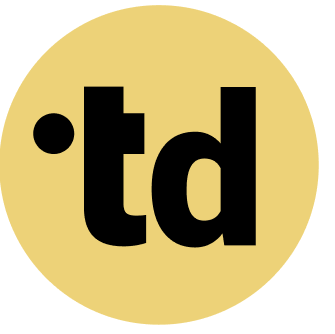Key Takeaways
Identifying workflow bottlenecks requires moving beyond static flowcharts to dynamic tools that offer real-time visibility into cycle times, work-in-progress, and resource utilization.
In hybrid teams (humans and AI agents), clearly defining roles for both humans and AI agents is essential to prevent digital bottlenecks and ensure smooth collaboration across locations.
Effective bottleneck analysis shifts conversations from blame to collaborative problem-solving, using objective data to improve team structures and drive organizational development.
Every team is on a quest to conquer the dragons of missed deadlines and project overload. In Germany, where 41% of companies plan to modernize their HR IT landscape, the need for sharp, effective processes is clear. Unclear roles and fuzzy workflows don't just slow things down; they drain energy and stifle the great work your people are trying to do. This guide provides Team Architects-the builders of modern organizations-with the tools for identifying bottlenecks in team workflows. We'll explore how to move from friction to flow, turning your talented crew into a high-performing hero squad.
Practical Framework for Team Architects
As a Team Architect, you can apply these principles to your organization:
- Map Current State: Document existing roles and responsibilities using a tool like teamdecoder.
- Identify Gaps: Where are roles unclear? Where do humans and AI agents overlap?
- Define Clear Boundaries: Specify which tasks are handled by humans vs. AI agents.
- Create Accountability: Assign clear decision rights for each role.
- Iterate and Improve: Continuously refine based on team feedback.
Recognize the High Cost of Hidden Friction
Workflow bottlenecks are the invisible anchors dragging down team performance, costing more than just time. In the EU, labour productivity per hour worked rose by only 0.4% in 2024, showing how slim the margins for improvement can be. Undefined work expectations are a top-five stress factor for employees, directly impacting morale and output. This friction leads to most employees admitting they have little ability to hold others accountable, creating widespread tension.
Here are five snack facts on the state of team workflows:
- Outdated technology is a leading barrier to productivity for some business leaders in Germany.
- A 2024 study found that 42% of European job seekers would reject a role without remote options, complicating workflow management.
- Managers report that maintaining company culture is a top challenge in hybrid models for measurable of employers.
- Unclear responsibilities can lead to duplicated efforts, a primary source of inefficiency in over many teams.>
- Companies with clear roles see up to a some increase in team performance.
These small points of friction accumulate, creating significant drag on your entire organization's momentum and strategic goals.
Shift from Manual Mapping to Automated Clarity
For years, Team Architects have relied on manual methods like flowcharts and swim lane diagrams to visualize processes. While helpful, these static maps can't keep up with today's dynamic, hybrid team (humans and AI agents) structures. They ofte They often become outdated the moment they are finished, failing to capture the daily work that is emergent and unplanned.approach requires dynamic workload management tools that provide real-time visibility.
The real win is moving from a snapshot to a live video feed of your team's operations. Automated tools connect to your existing systems, pulling data that reveals where tasks pile up without requiring dozens of hours of manual input. For examp For example, using a tool to analyze cycle times can cut project delays by up to a significant portion.t is essential for any leader focused on strategy operationalization, as it connects high-level goals to the daily realities of workload. This clarity allows you to stop fighting fires and start designing a more resilient system.
Architect Insight: Pinpoint Pressure Points with Precision
As a Team Architect, your goal is to find the specific points of failure before they cascade. Effective tools for identifying bottlenecks in team workflows don't just show you a problem; they show you *where* and *why* it's happening. This is about moving from symptoms, like missed deadlines, to root causes, like a single overloaded role. A recent study found that role ambiguity is a major predictor of organizational stress and poor performance.
Our Playful Tip: Look for tools that offer more than just charts. You need features that make data actionable. Here are four key indicators to monitor:
- Cycle Time vs. Lead Time Lead Time: A large gap between the time work begins (cycle time) and the total time from request to delivery (lead time) reveals that tasks wait in a queue for or more of their lifecycle.d="">Work-in-Progress (WIP) Limits: If one stage in your workflow consistently has more than 15 tasks active while others have three, you've found a bottleneck.
- Throughput Trends: A steady decline in the number of completed tasks per week, say from 20 down to 12, signals a growing constraint.
- Resource Utilization: When one team member has a utilization rate while others are at a significant portion, it points to an unbalanced workload, not a lack of effort. You can learn more about tracking time allocation to solve this.
Deep Dive: Hybrid teams, now the second most common work arrangement in the EU, introduce new complexities that require even greater clarity. These tools help you govern distributed work by making invisible digital workflows visible to Many people.
Make Bots and Humans Click in Hybrid Teams
The rise of hybrid teams and AI agent integration demands a fresh look at roles and responsibilities. In Germany, many employees already use AI regularly, yet only many of companies have a strategy for it. This creates a huge potential for workflow chaos. When you add AI agents to a team, their tasks and handoffs must be as clearly defined as any human's. Without clear governance, you risk creating digital bottlenecks where automated processes wait for human approvals that Rarely come.
A key challenge of distributed work is that many remote workers find online collaboration more difficult. Tools that define and visualize workflows help bridge this gap. They provide a single source of truth, ensuring a team member in Berlin and another in Munich have the same understanding of a process. This clarity is foundational for effective real-time workload tracking and is a core part of modern organizational development. By mapping these hybrid interactions, you can ensure that technology empowers your team instead of complicating its work.
Transform Bottlenecks into Breakthroughs
Identifying bottlenecks is only the first step; the goal is to create lasting change. With a clear view of your team's workflows, you can rebalance workloads, automate low-value tasks, and redefine roles to match your strategic priorities. This process of transformation empowers your team, reducing the stress that employees feel from their work. It turns frustration into a feeling of control and progress. You can try teamdecoder for free to see this in action.
Our Playful Tip: Use the clarity you gain to have better conversations. Instead of asking, "Why are we behind?" you can ask, "I see a pile-up in the review stage; how can we support that role?" This shifts the focus from blame to collaborative problem-solving. It's a powerful tool for change management because it's based on objective data, not personal opinions. This approach helps you scale your operations from day one. See our pricing to find a plan that fits your team's size and needs.
Your Next Step: Make Change Feel Like Play
You've seen the chaos and felt the overload, but the path to clarity is clear. The hero's journey for your team involves embracing new ways of seeing your work. By using the right tools for identifying bottlenecks in team workflows, you give your team the gift of flow. This isn't just about efficiency; it's about creating a workplace where people can do their best work without fighting the system. It's how you build resilient, high-performing teams ready for any challenge.
Ready to become a Team Architect? For those focused on transformation and change management, you can book a free personal consultation to get started. Schedule consultation. This is your chance to stop managing chaos and start designing clarity. The journey to better team structures and smoother workflows begins with a single, decisive step.
Try team decoder for free - shape your team and make change feel like play!
More Links
Wikipedia offers a comprehensive overview of workflow management.
Fraunhofer IAO provides information on agile organization and teamwork.
Handelsblatt features an article on successfully implementing agile teams in companies.
FAQ
How quickly can I see results with a workflow analysis tool?
While it varies, many teams can identify initial bottlenecks within the first two to four weeks of implementing a tool like teamdecoder. The real transformation comes from continuous monitoring and making small, data-informed adjustments over time.
Is this only for tech teams?
Not at all. Tools for identifying bottlenecks are valuable for any team where work moves through a series of stages, including marketing, HR, operations, and finance. Any process can be improved with better visibility.
How do I get my team on board with a new tool?
Frame it as a way to reduce their frustration and overload, not as a top-down mandate. Focus on the immediate benefit: less confusion and more clarity. Involve them in the process and use the tool to facilitate collaborative discussions about improving your shared workflows.
Can these tools integrate with software we already use?
Yes, modern workflow tools are designed to integrate with popular project management, communication, and HR systems. This allows them to pull real-time data automatically, saving you from manual data entry and ensuring your analysis is Often up-to-date.
What's the difference between workload management and identifying bottlenecks?
Identifying bottlenecks is about finding where work gets stuck in a process. Workload management is the broader practice of distributing tasks effectively across the team to ensure no one is overloaded. A good tool helps you do both: you identify the bottleneck, then use workload management features to fix it.





